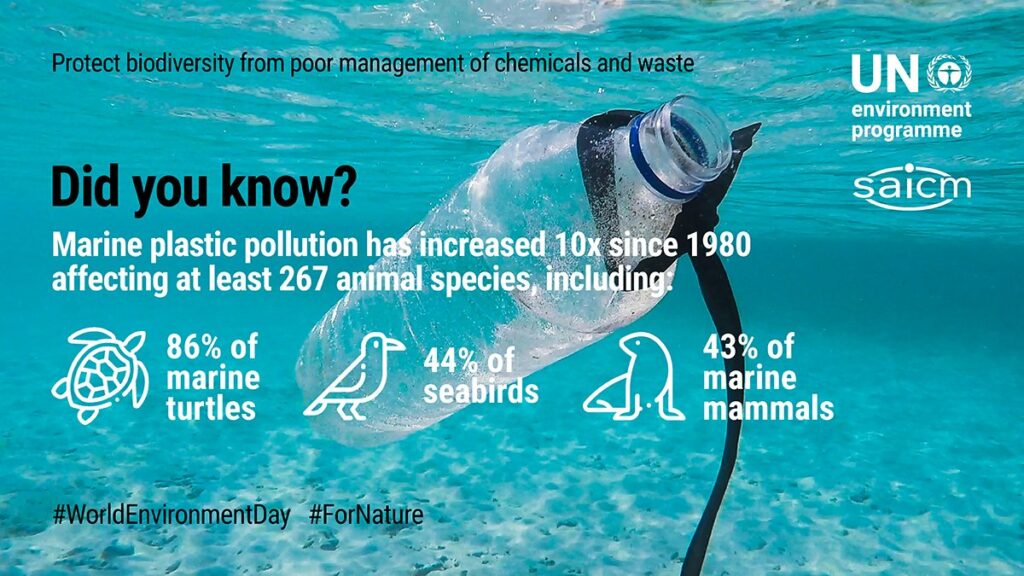DWR’s LandFlex Pilot Program: Advancing Sustainable Groundwater Management in California
Overview
The Department of Water Resources (DWR) has successfully implemented the LandFlex Pilot Program, which has saved over 100,000 acre-feet of groundwater and protected 16,500 drinking water wells in California’s frontline communities. This initiative aligns closely with the United Nations Sustainable Development Goals (SDGs), particularly SDG 6 (Clean Water and Sanitation), SDG 13 (Climate Action), and SDG 15 (Life on Land), by promoting sustainable water management and protecting vital ecosystems.
Program Background and Objectives
Launched in 2022 amid California’s third consecutive year of severe drought, the LandFlex Program was designed to address critical groundwater depletion and protect drinking water supplies in the Central Valley. The program received $23.3 million in grant funding, which was allocated to six groundwater sustainability agencies (GSAs) to support small and mid-sized farms in adopting sustainable practices. Key objectives included:
- Reducing groundwater overdraft
- Protecting community drinking water wells
- Supporting sustainable agricultural operations
- Preventing land subsidence and safeguarding water infrastructure
Key Achievements and Impact
- Over 100,000 acre-feet of groundwater conserved
- Protection of 16,500 drinking water wells in frontline communities
- Enrollment of 52 farms covering 4,474 acres of farmland
- Full compliance with the Sustainable Groundwater Management Act (SGMA) 15 years ahead of the 2040 deadline
- Mitigation of land subsidence risks through elimination of groundwater overdraft
Climate Resilience and Sustainable Development
During the pilot year, California experienced extreme weather fluctuations, including prolonged drought and sudden flooding. LandFlex demonstrated climate resilience by:
- Redirecting excess floodwaters onto fallowed farmland to recharge aquifers, supporting SDG 6 and SDG 13
- Maintaining agricultural productivity while promoting sustainable water use
- Protecting critical water delivery infrastructure from subsidence, contributing to SDG 9 (Industry, Innovation, and Infrastructure)
Collaborative Partnerships
The success of LandFlex is attributed to strong partnerships involving:
- Six GSAs: Madera County, Greater Kaweah, Eastern Tule, Lower Tule River Irrigation District, Pixley Irrigation District, and Westlands Water District
- California Department of Food and Agriculture
- Community organizations such as Self-Help Enterprises and Community Alliance with Family Farmers
- Industry groups including Western United Dairies and Almond Alliance
These collaborations enhanced community engagement, raised awareness, and ensured the program’s alignment with SDG 17 (Partnerships for the Goals).
Stakeholder Perspectives
- DWR Director Karla Nemeth: Emphasized LandFlex as a climate-resilient solution ensuring reliable drinking water, sustainable farming, and infrastructure protection.
- Anja Raudabaugh, CEO of Western United Dairies: Highlighted the program’s immediate impact on sustainability compliance for farmers.
- Blake Vann, Chairman of Almond Alliance: Described LandFlex as a new chapter in sustainable farming, fostering innovative practices for water and farm protection.
Resources and Further Information
- LandFlex Grant Program Final Report
- LandFlex Program Information
- Video series showcasing program success:
1. Sustainable Development Goals (SDGs) Addressed or Connected
- SDG 6: Clean Water and Sanitation
- The article discusses groundwater recharge, protecting drinking water wells, and ensuring sustainable water management, directly relating to SDG 6.
- SDG 2: Zero Hunger
- The program supports sustainable farming practices and keeps farms operational, contributing to food security and sustainable agriculture.
- SDG 13: Climate Action
- LandFlex is described as a climate-resilient solution addressing drought and flooding, linking to climate adaptation and resilience.
- SDG 15: Life on Land
- By preventing land subsidence and promoting sustainable land use, the program supports sustainable management of terrestrial ecosystems.
2. Specific Targets Under Those SDGs Identified
- SDG 6 Targets
- 6.1: Achieve universal and equitable access to safe and affordable drinking water for all – protecting 16,500 drinking water wells.
- 6.4: Substantially increase water-use efficiency across all sectors and ensure sustainable withdrawals – saving over 100,000 acre-feet of groundwater and eliminating overdraft.
- 6.6: Protect and restore water-related ecosystems – groundwater recharge efforts and protecting aquifers.
- SDG 2 Targets
- 2.4: Ensure sustainable food production systems and implement resilient agricultural practices – supporting sustainable farming and keeping farms operational.
- SDG 13 Targets
- 13.1: Strengthen resilience and adaptive capacity to climate-related hazards – LandFlex’s role in managing drought and flood impacts.
- SDG 15 Targets
- 15.3: Combat desertification, restore degraded land and soil – preventing land subsidence and promoting sustainable land management.
3. Indicators Mentioned or Implied to Measure Progress
- Groundwater Saved (acre-feet)
- Over 100,000 acre-feet of groundwater saved is a quantitative measure of water conservation.
- Number of Drinking Water Wells Protected
- 16,500 drinking water wells protected indicates progress toward safe water access.
- Compliance with Sustainable Groundwater Management Act (SGMA)
- Lands enrolled in the program are in compliance with SGMA 15 years ahead of the 2040 deadline, indicating regulatory progress.
- Number of Farms and Acres Enrolled
- 52 farms and 4,474 acres enrolled reflect adoption of sustainable practices.
- Reduction in Groundwater Overdraft
- Elimination of groundwater overdraft on enrolled lands is an indicator of sustainable water use.
- Use of Floodwaters for Groundwater Recharge
- Redirecting floodwaters onto fallowed farmland to recharge aquifers demonstrates adaptive water management.
4. Table: SDGs, Targets and Indicators
| SDGs | Targets | Indicators |
|---|---|---|
| SDG 6: Clean Water and Sanitation |
|
|
| SDG 2: Zero Hunger |
|
|
| SDG 13: Climate Action |
|
|
| SDG 15: Life on Land |
|
|
Source: mavensnotebook.com







